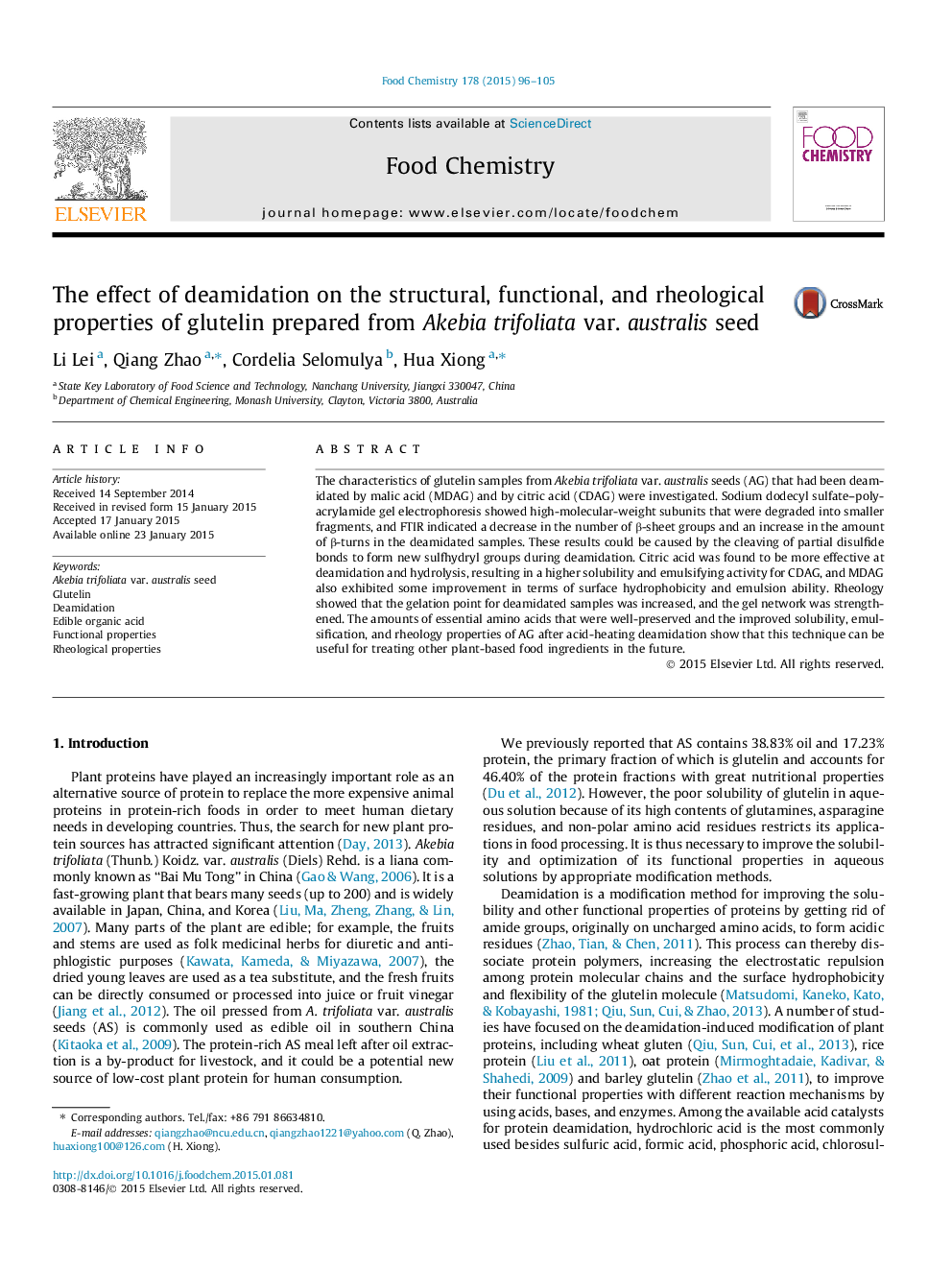| Article ID | Journal | Published Year | Pages | File Type |
|---|---|---|---|---|
| 7592310 | Food Chemistry | 2015 | 10 Pages |
Abstract
The characteristics of glutelin samples from Akebia trifoliata var. australis seeds (AG) that had been deamidated by malic acid (MDAG) and by citric acid (CDAG) were investigated. Sodium dodecyl sulfate-polyacrylamide gel electrophoresis showed high-molecular-weight subunits that were degraded into smaller fragments, and FTIR indicated a decrease in the number of β-sheet groups and an increase in the amount of β-turns in the deamidated samples. These results could be caused by the cleaving of partial disulfide bonds to form new sulfhydryl groups during deamidation. Citric acid was found to be more effective at deamidation and hydrolysis, resulting in a higher solubility and emulsifying activity for CDAG, and MDAG also exhibited some improvement in terms of surface hydrophobicity and emulsion ability. Rheology showed that the gelation point for deamidated samples was increased, and the gel network was strengthened. The amounts of essential amino acids that were well-preserved and the improved solubility, emulsification, and rheology properties of AG after acid-heating deamidation show that this technique can be useful for treating other plant-based food ingredients in the future.
Related Topics
Physical Sciences and Engineering
Chemistry
Analytical Chemistry
Authors
Li Lei, Qiang Zhao, Cordelia Selomulya, Hua Xiong,
